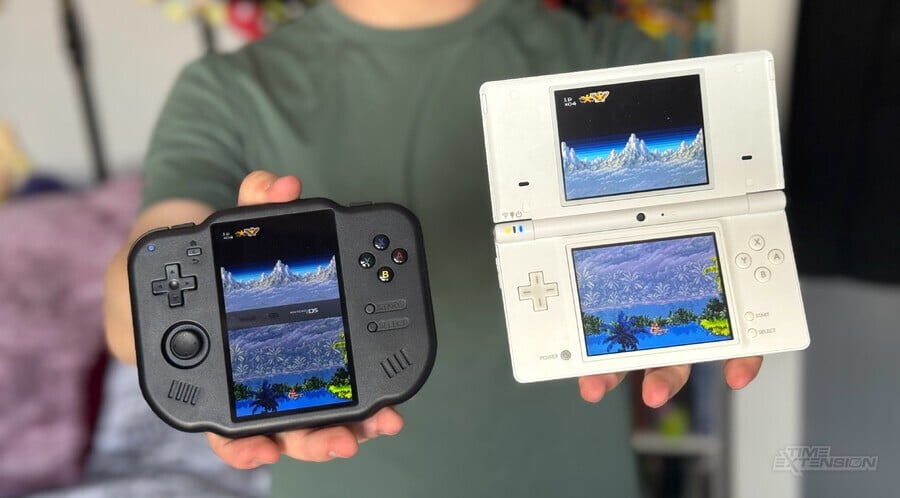
I've long said that the handheld emulation sector is saturated with devices which all basically do the same thing, with only minor increases in processing power setting them apart – well, that and design inspiration, which usually involves cloning the look of a famous portable from decades ago, like the GBA or GBA SP.
The MagicX Zero 40 (available for under $100 from MechDIY) is a refreshingly new approach that doesn't attempt to ape the look of classic hardware, but instead uses a bespoke design to offer a laser-focused means of rediscovering Nintendo DS games.
Right from the start, MagicX made it clear this is a handheld aimed at fans of Nintendo's best-selling dual-screen portable; it's not trying to cover all of the bases like so many emulation handhelds do, but instead caters for the millions of people who have a strong nostalgic pull towards the DS family of consoles. To this end, MagicX has been (mostly) successful.
MagicX Zero 40 Review: Design
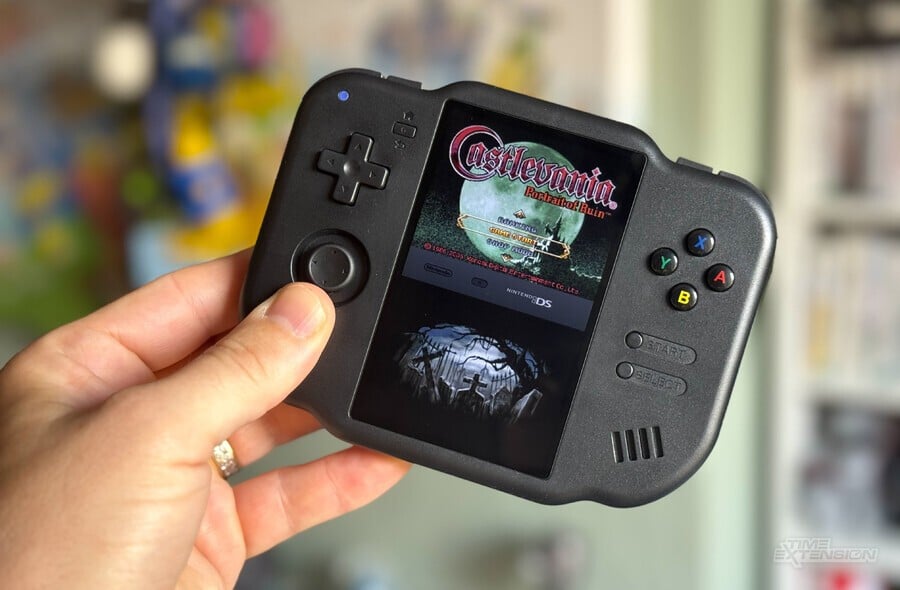
Unlike rivals such as Anbernic and Miyoo, MagicX hasn't copied Nintendo when it comes to the design of the Zero 40; instead, it has created an entirely new design which, a first glance, doesn't look at all appealing.
This is down to the fact that the console's portrait-oriented 4-inch screen creates the need for a rather odd-looking device; the vertical display practically fills the middle portion of the system from top to bottom, with the physical controls being situated on either side. This means the Zero 40 has a square-style design that is curiously at odds with the portrait or landscape systems we're used to seeing in the emulation sector.
The front of the Zero 40 has a D-pad and Hall Effect stick on the left-hand side, and the traditional four-button cluster – alongside Start and Select – on the right. This mimics the control setup of the Nintendo DS whilst throwing in analogue control. There's also a 'Home' button in the top-left corner and two front-firing speakers.
On the top edge, you'll find four in-line shoulder buttons, two USB-C ports and a 3.5mm headphone jack. On the left-hand edge, there's a volume rocker, and on the right, you'll find a power button (which also puts the unit to sleep) and two MicroSD card slots.
As odd as the design is, it feels comfortable to hold, and all of the important inputs are in easy reach – with the possible exception of the innermost shoulder buttons, but these are rarely used in games anyway. The D-pad feels like a close match to the one on the DS Lite and DSi consoles (if a little too spongy at times), and the four action buttons are a similar size, too – although they have a dome-like design and are quite glossy.
Overall, the build quality is good, and it's comfortable to use for prolonged periods; the Zero 40 certainly feels more premium than its low price point suggests.
MagicX Zero 40 Review: Display
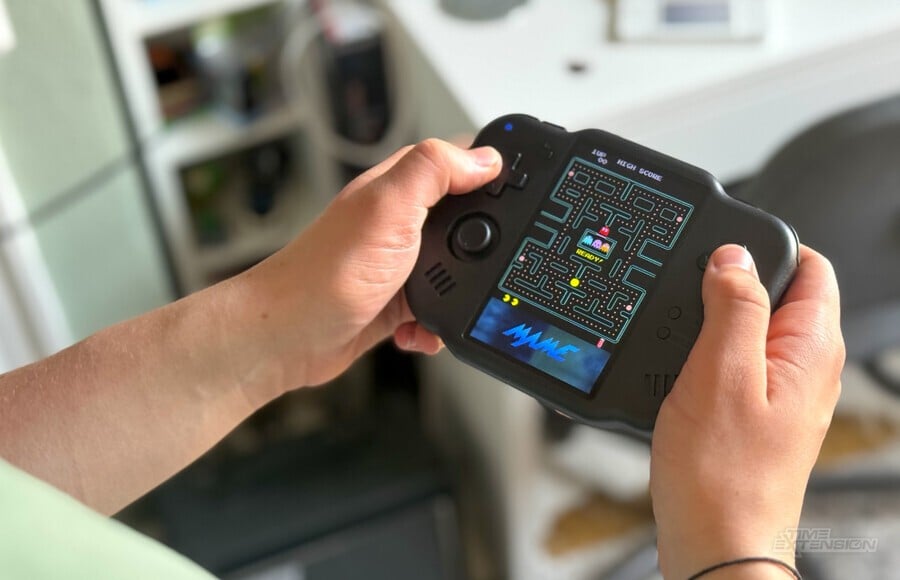
While the design is a big talking point, the 4-inch vertical display is the thing you'll perhaps be most focused on when you initially pick up the device. It's an IPS panel with a resolution of 480x800, which means there are more pixels on offer than you got in the original hardware, which had 256 x 192 pixels per screen. However, the single display on the Zero 40 is slightly smaller than the dual configuration on the DS – and this leads to two problems.
Firstly, while the screen resolution is better, it's not good enough to give a perfect 2x resolution bump. The image still looks great, but there's a noticeable softness which you don't get on original hardware. Considering how good some of the pixel artwork is in DS games, this is more of an issue than you might assume; I'd liken it to playing DS titles on the 3DS, which blows up the image so it looks muddy and ill-defined.
The second big issue with the smaller screen is the fact that many DS games are built around precise stylus control. There's no stylus on the Zero 40, so you're using your fingertip to interact with the capacitive touchscreen. Even the daintiest of pinkies isn't going to match the pinpoint accuracy of a stylus, so titles which require precision, such as WarioWare Touched, Zoo Keeper, Meteos or Yoshi Touch & Go – are bordering on being unplayable on the Zero 40. To be honest, even if MagicX's handheld had screens of the same size as the Nintendo DS, this would still be an issue because a stylus is always better than your finger.
As any DS fan will tell you, not every game on the console made effective use of the touchscreen – in fact, some of the best titles on Nintendo's handheld ignore touch-based controls entirely. If you're looking to play those, then the Zero 40 becomes easier to recommend. I'm a big fan of the Castlevania series, and while Dawn of Sorrow includes some very minor touch-based nonsense, all three DS entries in the franchise are perfectly playable on the Zero 40, even without a stylus-based interface.
Outside of playing DS games, however, the Zero 40 struggles to justify itself. Any content that's meant to be displayed in a 4:3 ratio or wider appears so small on that vertical screen that it's almost impossible to see what's happening. The only exception – and it's a really cool one, I have to say – is TATE-mode arcade games, like Tatsujin, Tiger Heli, Strikers 1945, Mappy, LED Storm, Pac-Man and many, many more.
While the display is so tall that there's still some unused space when playing TATE games, it's refreshing to see a device that caters to them so effectively. During the review period, I probably played coin-op titles more than I did DS ones!
MagicX Zero 40 Review: OS & Performance
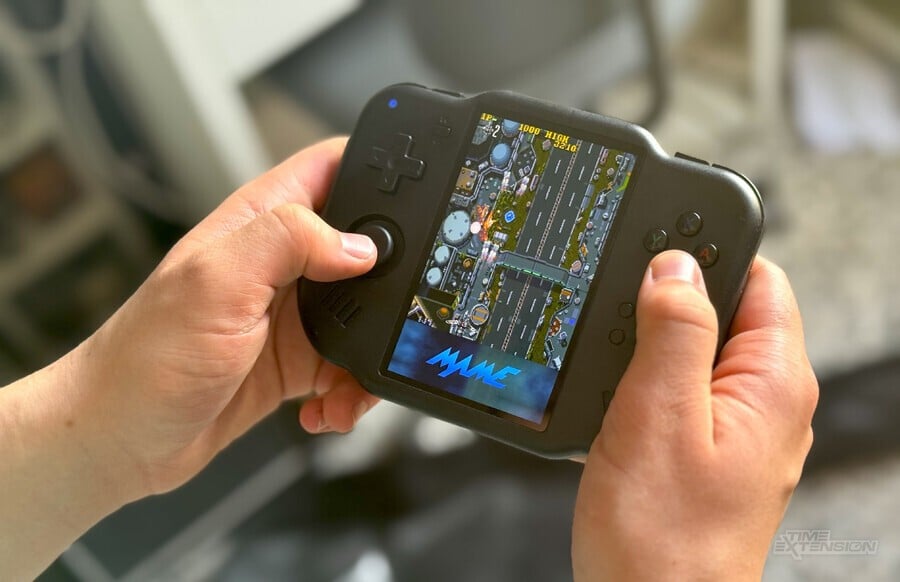
The Zero 40 is running on Google's Android 10 OS, with the custom 'Dawn Launcher' skin sitting on top. It's easy to toggle between systems using this UI, and navigating around is pretty straightforward, too.
The only time things get a little sticky from a UX point of view is when you're opening emulators which aren't using the RetroArch front-end. Nintendo DS emulation, for example, makes use of DraStic, which has an entirely different menu system than RetroArch. The same goes for FlyCast (Dreamcast) and DuckStation (PS1), as well as the other random emulators which are included out-of-the-box.
It's a minor inconvenience, but for example, I grew tired of having to disable the FPS counter on each emulator, as the process is different each time. Memorising the different UIs for each is also annoying, but this isn't an issue that's by any means exclusive to the Zero 40.
The AllWinner A133P chipset that powers the Zero 40 is robust enough to run DS titles without issue, but other systems, like Dreamcast and Saturn, require frameskip to be enabled – and even then, you're not getting full speed performance. As I've already established, there's little point in playing 4:3 content on this device anyway, so it's no great loss.
There's a 4300mAh battery running the show here, which is rated for between 4 and 6 hours of gameplay.
MagicX Zero 40 Review: Conclusion
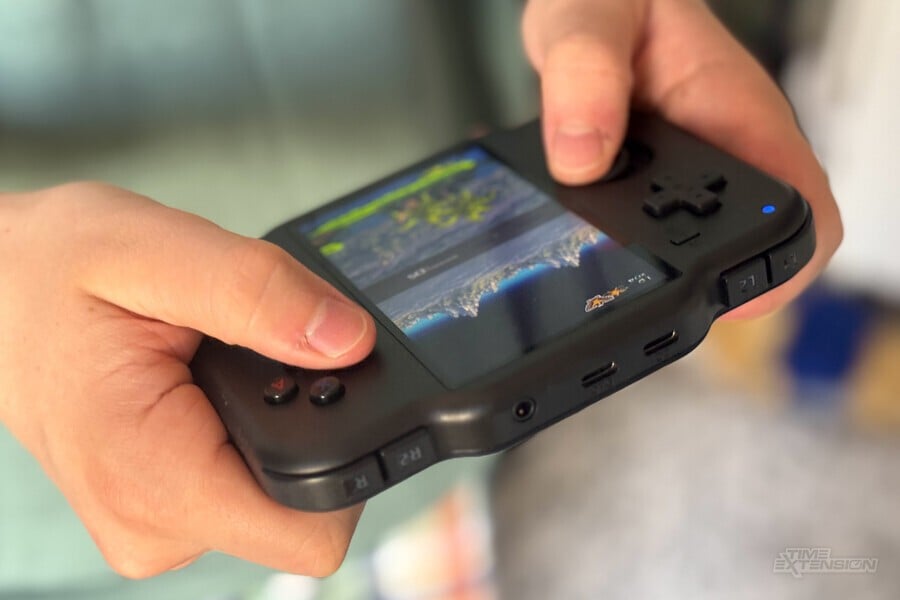
If you're looking for an emulation handheld which plays as many systems as possible, then the MagicX Zero 40 is not the device for you. While it has support for multiple emulators thanks to its Android-based OS, it only really excels when playing Nintendo DS and TATE-mode arcade games; everything else is a massive, massive compromise thanks to that vertical display.
Having said that, there's nothing inherently wrong with a device which is more selective on which platforms is wishes to replicate, and outside of the super-expensive AYANEO Flip DS, there hasn't been a decent 'clone' of the Nintendo DS in this sector of the market yet.
Likewise, most handhelds are focused on 4:3 or 16:9 content, which means TATE-mode coin-ops are somewhat awkward to play. The Zero 40 nails this aspect, too, making it appealing to veteran arcade gamers. I honestly think I had more fun resisting coin-op shmup classics on this thing than I did playing DS games.
That brings me to my final point: while the DS is tricky to emulate on many handheld devices, and the fact that MagicX has produced a platform which (mostly) does it well should be applauded, it's not like the original hardware is hard to find these days. With well over 150 million systems sold during its lifespan, the DS is one of the most easily obtained retro systems of the current era, and you can pick one up in decent condition for less than the price of the Zero 40.
If you really want to experience Nintendo's dual-screen best-seller, then that's the optimal way to do so – but if you're looking for a device which also doubles as an amazing way to play old-school arcade classics, then by all means, give this a spin.
Thanks to MechDIY for supplying the MagicX Zero 40 used in this review.
